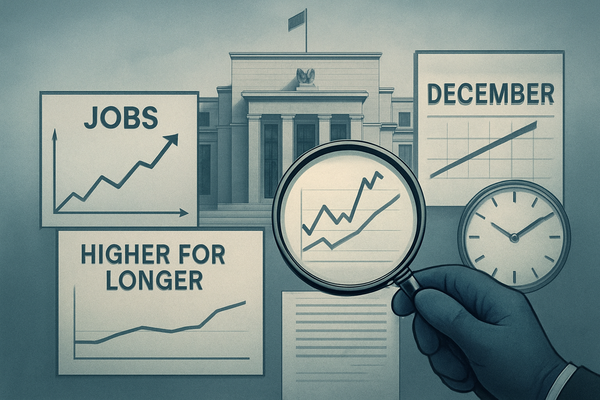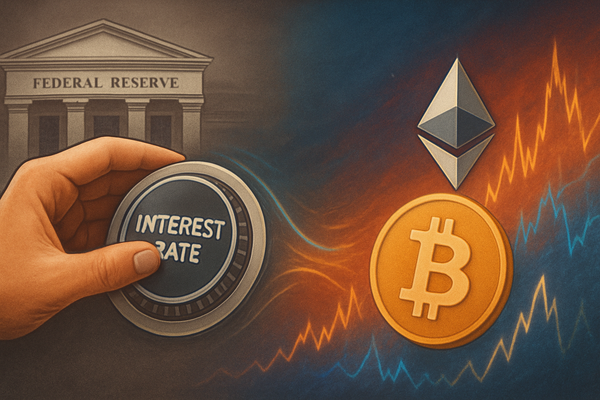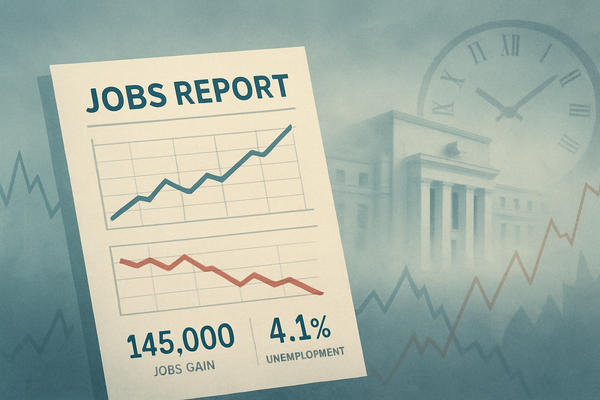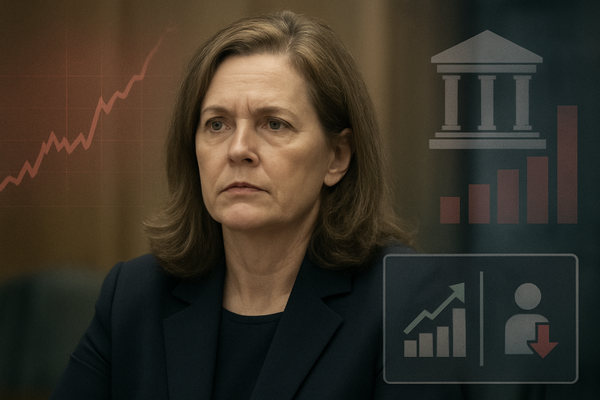Gold's Glitter Dims as Mighty Dollar Ascends to Multi-Month Highs
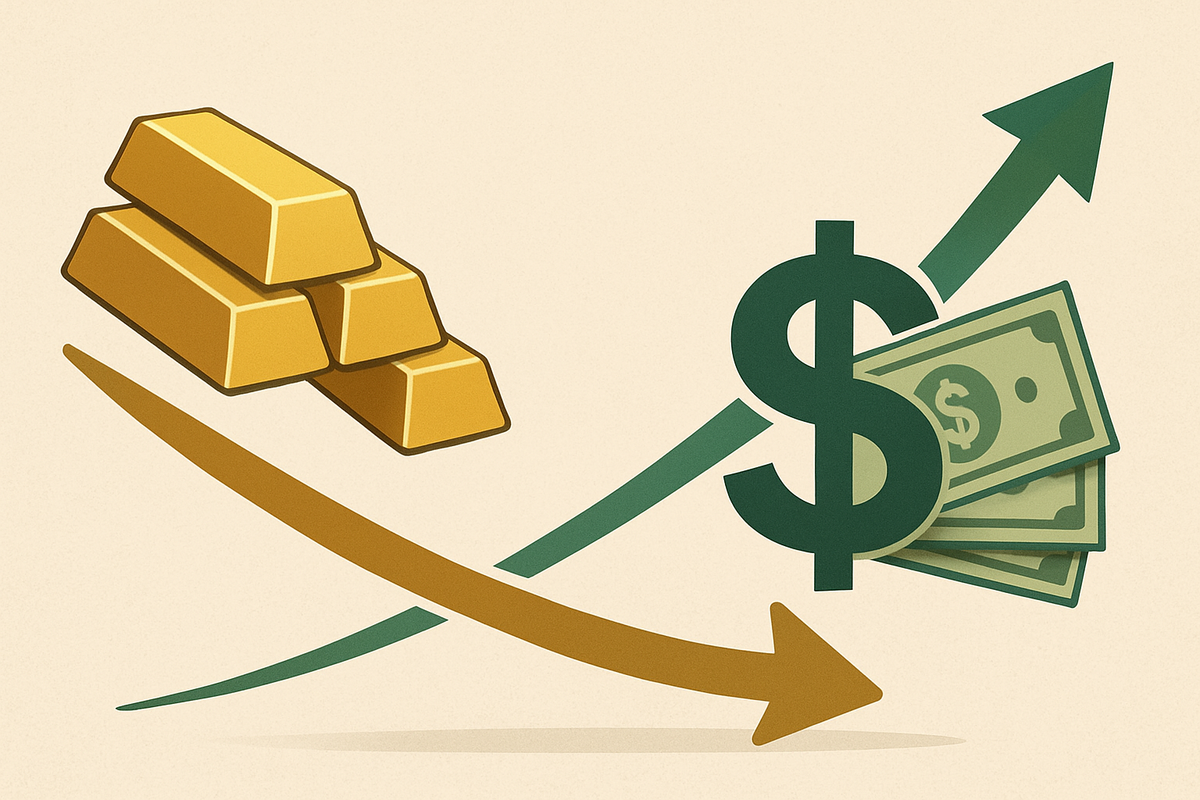
New York, NY – November 20, 2025 – The financial markets are currently witnessing a significant recalibration as gold prices retreat from their recent highs, mirroring a robust surge in the US dollar. This dual movement underscores a fundamental inverse relationship, with the greenback testing multi-month peaks and casting a shadow over the precious metal's traditional safe-haven appeal. Investors are closely monitoring these shifts, as they signal a potential paradigm shift in monetary policy expectations and ripple effects across global asset classes.
The recent downturn in gold, following an all-time high of $4,381.58 in October, sees the yellow metal trading near $4,052.00 per ounce, reflecting a cautious sentiment. This retreat is largely attributed to a significant reduction in market bets for an imminent Federal Reserve interest rate cut, with probabilities for a December easing now sharply diminished. Concurrently, the US Dollar Index (DXY) has rallied to impressive multi-month highs, propelled by a "higher-for-longer" interest rate outlook from the Federal Reserve. This dynamic creates a challenging environment for gold, as a stronger dollar makes the commodity more expensive for international buyers, dampening demand and reinforcing its traditional negative correlation with the US currency.
The Dollar's Dominance: A Detailed Look at Gold's Recent Slide
The recent retreat in gold prices has been swift and decisive, occurring over the past month with a decline of 1.81% as of November 20, 2025. Spot gold, which had soared to an unprecedented $4,381.58 in October, has since pulled back, trading at approximately $4,052.00 per ounce. This downward pressure intensified during the European trading session, with a 0.5% drop, extending to a 0.70% fall from the previous day. This technical retreat from key resistance levels suggests that profit-taking and a period of consolidation with bearish undertones are at play.
The primary catalyst for gold's decline is the Federal Reserve's evolving monetary policy stance. Market expectations for a 25-basis-point rate cut in December have drastically fallen from 50.1% to 32.8% in just a short period. This shift came after the release of recent Federal Reserve meeting minutes, which indicated a strong preference among most policymakers to maintain steady interest rates. The "higher-for-longer" narrative has taken firm root, making non-yielding assets like gold less attractive compared to interest-bearing US dollar-denominated assets.
Simultaneously, the US Dollar Index (DXY) has been on an impressive ascent, reaching around 100.30 on November 20, 2025. This marks a five-session winning streak for the DXY, bringing it close to its five-month high of 100.36 achieved earlier in the month, and even touching a six-month high. This surge in dollar strength is a direct consequence of the Fed's hawkish signals and the resulting elevated US Treasury yields, which enhance the appeal of the dollar. Key players in this scenario include the Federal Reserve, whose communications are dictating market sentiment, and major institutional investors and traders who are adjusting their portfolios based on interest rate expectations. The initial market reaction has been a clear shift away from gold and towards the dollar, with increased volatility in currency markets and a re-evaluation of risk-on versus risk-off assets.
Corporate Crossroads: Winners and Losers in a Strong Dollar Environment
The strengthening US dollar and retreating gold prices create a bifurcated landscape for public companies, presenting both opportunities and challenges across various sectors. The most direct impact is felt within the gold mining industry, where companies are likely to experience pressure on their revenues and profitability.
Gold mining companies such as Barrick Gold Corp. (NYSE: GOLD) and Newmont Corporation (NYSE: NEM), whose revenues are primarily denominated in US dollars but whose operational costs may be in local currencies, could see their margins squeezed if the dollar strengthens significantly and gold prices continue to fall. A lower gold price means less revenue per ounce extracted, potentially impacting their earnings reports and investor sentiment. Conversely, mining companies with substantial operations outside the US that incur costs in weaker local currencies might see some offset, but the overall trend of falling gold prices remains a headwind. Investors in these companies may face reduced dividends or slower growth prospects in the short to medium term.
On the other hand, companies that import goods or have significant dollar-denominated debt could benefit from a stronger US dollar. For instance, retailers or manufacturers that source raw materials or finished products from overseas, such as Walmart Inc. (NYSE: WMT) or Apple Inc. (NASDAQ: AAPL), might find their import costs reduced, leading to improved profit margins. Similarly, companies with substantial US dollar-denominated debt but generate revenue in other currencies might find their debt burden relatively lighter when translated back to their operational currency. However, US-based companies that heavily rely on exports could face challenges, as their products become more expensive for international buyers due to the stronger dollar, potentially impacting their global competitiveness and sales volumes. This could affect large multinational corporations like The Boeing Company (NYSE: BA), which derives a significant portion of its revenue from international sales. Furthermore, companies in the financial sector, particularly those involved in foreign exchange trading or offering dollar-denominated investment products, might see increased activity and potentially higher revenues due to heightened currency volatility.
Broader Implications: Navigating the Shifting Sands of Global Finance
The current retreat in gold prices and the ascent of the US dollar extend far beyond immediate market fluctuations, signaling broader industry trends and potential ripple effects across the global financial landscape. This event fits squarely into the ongoing narrative of monetary policy divergence among major central banks. While the Federal Reserve maintains a hawkish stance, other central banks, such as the European Central Bank or the Bank of Japan, may face different inflationary pressures or economic growth trajectories, leading to varying policy paths. This divergence can exacerbate currency volatility, impacting global trade balances and capital flows.
The strengthening dollar could create ripple effects on competitors and partners across various sectors. For instance, countries heavily reliant on dollar-denominated imports, particularly commodities like oil, could face increased import costs, potentially fueling domestic inflation. This could pressure emerging market economies, which often hold significant dollar-denominated debt, leading to concerns about debt sustainability and capital outflows. Historically, periods of strong dollar appreciation have often been associated with financial stress in emerging markets, as seen during various crises in the 1990s and early 2000s.
From a regulatory and policy perspective, a sustained strong dollar could prompt discussions around currency manipulation or intervention from other central banks seeking to protect their export competitiveness. While direct intervention is less common today, verbal interventions or adjustments to monetary policy by other nations could become more frequent. This situation also highlights the ongoing debate about the dollar's role as the world's primary reserve currency. While central banks have been diversifying their reserves away from the dollar in recent years, geopolitical tensions and the search for yield continue to provide underlying support for gold in the longer term, despite short-term headwinds. The current scenario serves as a reminder of the delicate balance between monetary policy, currency strength, and commodity prices, with historical precedents showing that such periods can lead to significant reallocations of capital and adjustments in global economic strategies.
What Comes Next: Navigating the Future of Gold and the Dollar
Looking ahead, the interplay between gold prices and the US dollar will remain a critical focal point for investors and market analysts. In the short term, gold is likely to experience continued volatility, with prices potentially range-bound between $4,000 and $4,200 per ounce as markets digest further economic data and await clearer signals from the Federal Reserve. Technical indicators suggest that a "sell on rise" strategy might prevail, with key support levels at $4,050, $4,000, and $3,936 needing to hold to prevent further significant declines. The immediate focus will be on upcoming inflation reports and any further comments from Fed officials that could either reinforce or challenge the "higher-for-longer" interest rate outlook.
In the long term, several factors could influence the trajectory of both assets. While the current environment favors the dollar, underlying structural drivers for gold, such as ongoing geopolitical tensions, central bank diversification away from dollar reserves, and concerns over fiscal deficits in major economies, are likely to provide a floor for the precious metal. Should global economic growth falter or if inflationary pressures unexpectedly intensify, gold's appeal as a safe haven and inflation hedge could resurface. Conversely, a sustained period of robust US economic growth and continued hawkishness from the Fed could extend the dollar's rally and keep gold under pressure.
Potential strategic pivots or adaptations will be required from investors. Diversification remains key, with a careful balance between dollar-denominated assets offering yield and alternative assets like gold providing a hedge against systemic risks. Market opportunities may emerge in specific sectors; for instance, companies with strong export capabilities might explore hedging strategies against currency fluctuations, while those with significant import needs could benefit from the stronger dollar. Potential scenarios range from a continued strengthening of the dollar, pushing gold further down, to a reversal if economic data weakens or the Fed signals a more dovish stance. Investors should closely monitor global macroeconomic indicators, central bank communications, and geopolitical developments to adapt their strategies and capitalize on emerging market opportunities or mitigate potential challenges.
Wrapping Up: Key Takeaways and Future Watch
The recent retreat in gold prices, set against the backdrop of a surging US dollar, marks a significant moment in the financial markets, driven primarily by a re-evaluation of Federal Reserve monetary policy. The key takeaway is the reaffirmation of the inverse relationship between the dollar and gold, with a hawkish Fed pushing the greenback to multi-month highs and simultaneously dampening the allure of the non-yielding precious metal. This has led to a recalibration of investor expectations, shifting away from imminent rate cuts and towards a "higher-for-longer" interest rate environment.
Moving forward, the market will likely remain highly sensitive to economic data releases, particularly inflation figures and employment reports, as well as any forward guidance from the Federal Reserve. The assessment of the market suggests continued volatility for gold in the short term, with potential for range-bound trading as it seeks new equilibrium. The strengthening dollar, while beneficial for some sectors, poses challenges for others, particularly gold miners and US exporters.
For investors, the coming months will demand vigilance. Watching for shifts in the Federal Reserve's rhetoric, monitoring global geopolitical developments, and observing central bank gold purchasing trends will be crucial. While the immediate outlook for gold appears challenging due to dollar strength, its long-term role as a hedge against inflation and systemic risk remains intact. Investors should consider a diversified approach, balancing exposure to dollar-denominated assets with strategic allocations to gold, while carefully assessing their risk tolerance in this evolving financial landscape.
This content is intended for informational purposes only and is not financial advice
